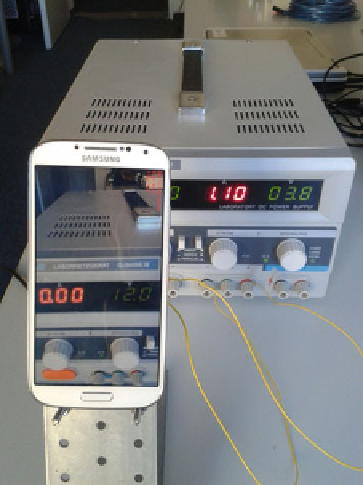Graphics Reference
In-Depth Information
Fig. 7.18
Power consumption for a tracking application on Samsung Galaxy S4
7.3.2.1 Processor Architecture
The dedicated ARHWacceleration engine discussed above is a small HW IP module
that is less than 1mm
2
in size at 28nm CMOS technology, and runs the full AR 3D
pipeline at 30 fps. The module consumes less than 10mW, compared to an ARM
CA15 CPU running at 4-5 fps consuming around 1W as shown in Fig.
7.18
.The
figure depicts a tracking application on a Samsung Galaxy S4 that drains roughly in
the order of
1A at 3.8V leading to a power consumption of 3.8W. Subtracting the
1.8W that the camera app consumes results in 2W for processing on the ARM (also
includes rendering one polygon with the camera image as texture). This example
clearly shows the need for HW acceleration of the key hotspots of the AR pipeline
for a longer battery life, which enables the always on always augmented use case.
∼
7.4 Concluding Remarks
AR will be the digital User Interface of choice for everybody in the future as it
will bridge the gap between real world and digital world more efficiently than any
other technology. AR will be “See it—understand it—control it,” the perfect self-
contained UI. It launches itself when needed; it can explain itself on the fly and
offers the appropriate controls in real time-Instant seamless and relevant! But to
make this happen, AR, especially the CV part of AR, needs to be available all the

